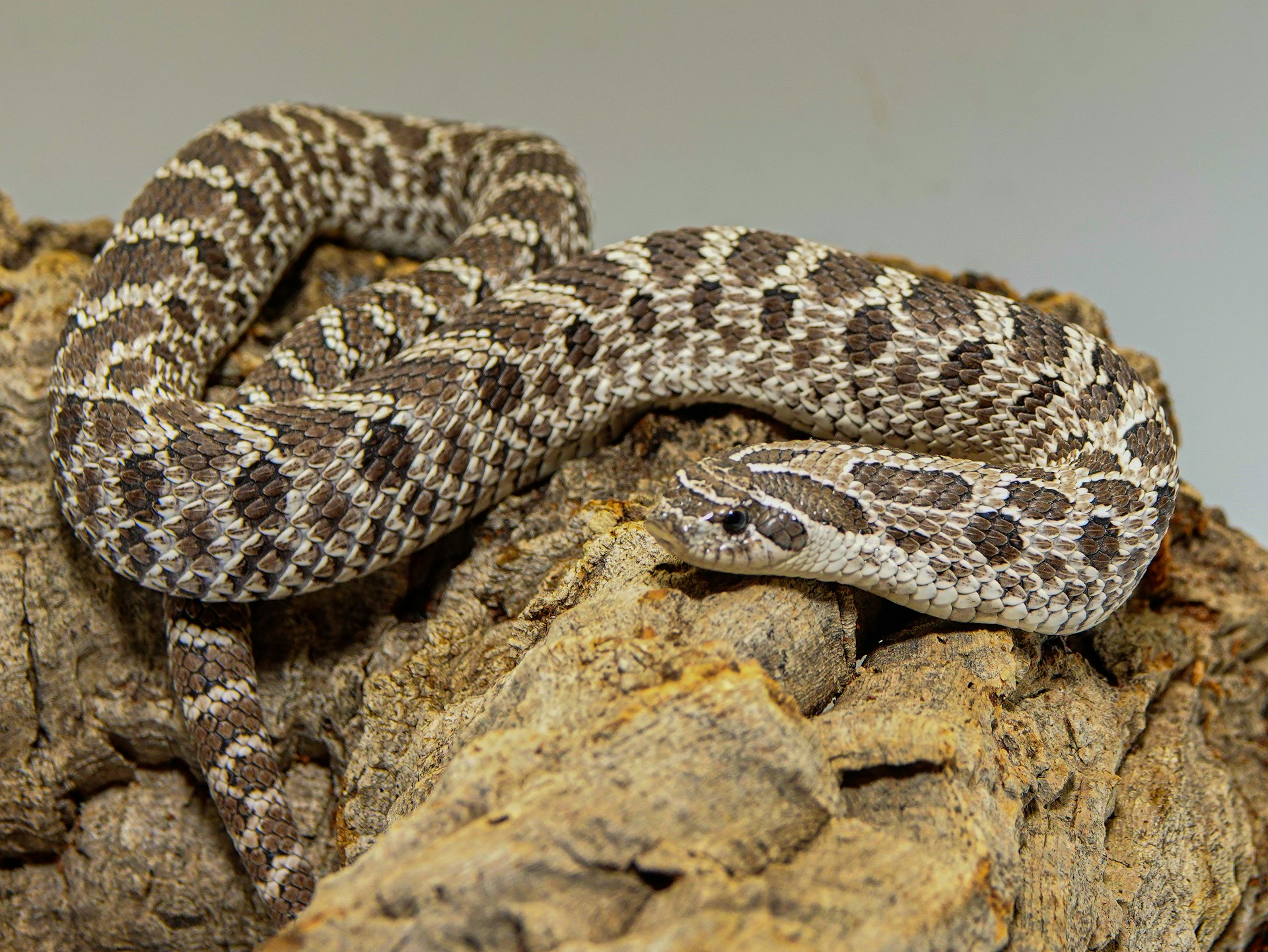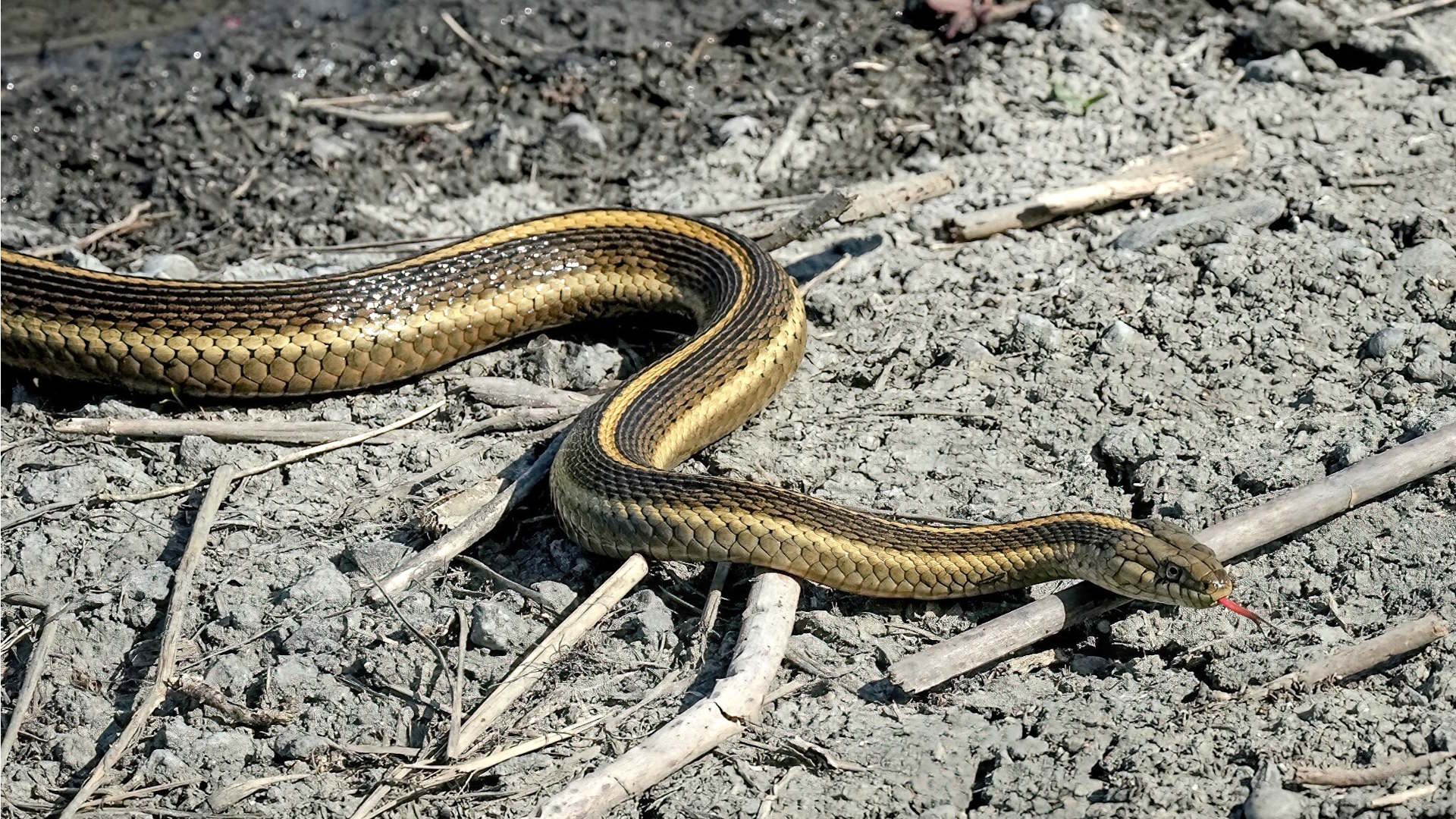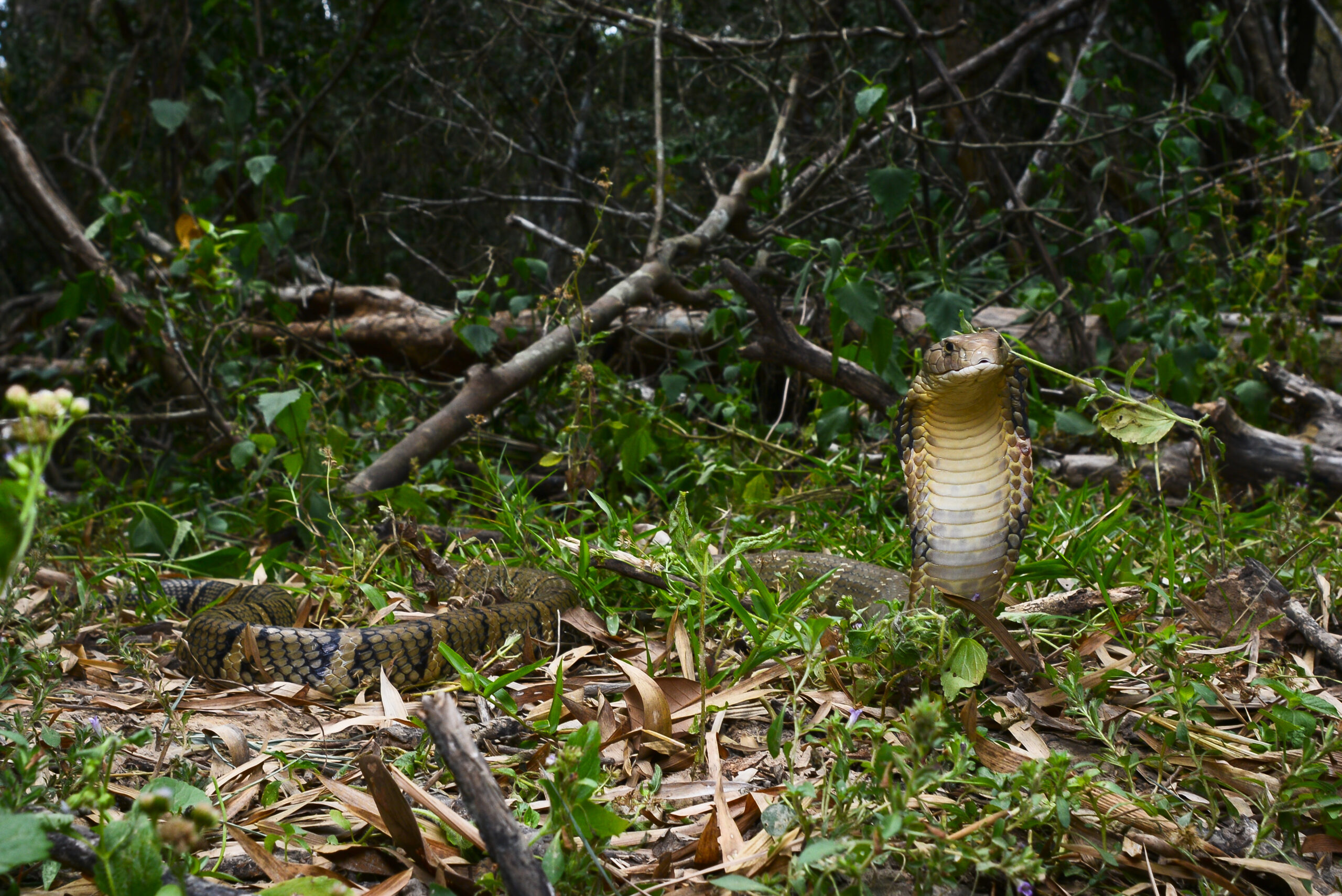Slithering through the undergrowth with deadly precision, venomous snakes have fascinated and terrified humans since prehistoric times. These remarkable reptiles possess one of nature’s most sophisticated weapons: venom.
But this complex biochemical arsenal wasn’t created overnight—it represents millions of years of evolutionary refinement and adaptation.
The story of snake venom evolution is one of extraordinary biological innovation, shaped by predator-prey relationships, environmental changes, and genetic modifications over vast timescales.
From primitive toxic secretions to today’s highly specialized cocktails of proteins and enzymes, the evolution of venom systems in snakes offers a fascinating window into evolutionary processes, demonstrating how natural selection can transform simple biological functions into sophisticated tools for survival.
This article explores how snake venom has evolved across geological time, revealing the intricate dance between form and function that has produced some of nature’s most efficient predators.
The Ancient Origins of Snake Venom

Snake venom’s evolutionary story begins approximately 60-80 million years ago during the Late Cretaceous period, though the foundations for venom development were laid much earlier.
Recent molecular studies suggest that the genetic framework for venom production evolved from ordinary salivary proteins that underwent duplication and modification.
These proteins originally served digestive functions but gradually acquired toxic properties through a process called neofunctionalization.
Early venomous snakes likely possessed relatively simple toxic secretions that caused mild local effects rather than the complex, potent venoms we observe today.
Paleontological evidence, combined with phylogenetic analyses, indicates that the common ancestor of all modern snakes possessed some form of venom-producing capability, suggesting venom is an ancestral trait that has been independently lost in certain lineages rather than repeatedly gained.
From Toxins to Complex Venoms

The transition from simple toxic secretions to sophisticated venom cocktails occurred through an evolutionary process called gene duplication followed by functional divergence.
When genes for ordinary salivary proteins duplicated, the redundant copies were free to evolve new functions without compromising the original protein’s role.
This process created families of toxin genes that gradually diversified and specialized, leading to the complex mixture of components found in modern snake venoms.
The acceleration of this process was remarkable; studies show that toxin genes evolve much faster than other parts of the snake genome, undergoing what scientists call “accelerated evolution.”
This rapid change has produced venom components that can target nearly every physiological system in prey animals, from blood coagulation and nerve transmission to tissue integrity and cardiovascular function, demonstrating the remarkable adaptability of these molecular weapons.
The Evolution of Venom Delivery Systems

Equally impressive as the evolution of venom itself is the development of specialized delivery mechanisms that ensure toxins reach their targets efficiently.
The earliest venomous snakes likely possessed relatively simple hollow or grooved teeth with minimal modifications for venom delivery. Over time, these structures evolved into sophisticated fangs with internal channels that function essentially as hypodermic needles.
Front-fanged venomous snakes (like vipers and cobras) represent the most advanced delivery systems, with long, hinged fangs that can fold against the roof of the mouth when not in use.
Rear-fanged snakes display an intermediate evolutionary stage, with grooved teeth positioned toward the back of the mouth.
The muscular structures and glands associated with venom delivery have co-evolved with fangs, creating increasingly efficient systems for injecting toxins precisely into prey tissue, representing a remarkable example of integrated anatomical evolution.
Three Major Lineages of Venomous Snakes

The evolutionary history of venomous snakes has produced three major lineages with distinct venom systems: Elapidae (cobras, mambas, and coral snakes), Viperidae (vipers and pit vipers), and Colubridae (a diverse family containing many rear-fanged species).
Each lineage has followed its own evolutionary trajectory, resulting in characteristic venom compositions and delivery mechanisms.
Elapids typically produce neurotoxic venoms that attack the nervous system, delivered through relatively small, fixed front fangs. Viperids have evolved primarily hemotoxic and cytotoxic venoms delivered via long, hinged front fangs connected to large venom glands.
Colubrids represent a more diverse and generally less specialized group, with many members possessing rear fangs and milder venoms, though exceptions like the boomslang prove lethally toxic.
These divergent evolutionary paths illustrate how different selective pressures can produce varied solutions to the same biological challenge—efficiently subduing prey.
Venom as an Adaptation for Prey Acquisition

The primary evolutionary driver behind snake venom has been its role in prey acquisition. Venom offers substantial advantages to snakes, allowing them to subdue prey much larger than themselves while minimizing the risk of injury from struggling victims.
This adaptation has been particularly important given that snakes lack limbs to restrain prey.
Different hunting strategies have selected for different venom properties; ambush predators like vipers typically possess venoms that rapidly immobilize prey but may take longer to cause death, preventing escape of struck prey.
In contrast, active foragers like cobras often have venoms causing rapid paralysis or death, essential for quickly subduing prey they actively pursue.
The specificity of venom components often reflects the preferred prey of different snake species—rodent specialists typically have venoms particularly effective against mammals, while those specializing in reptiles or birds may possess toxins specifically targeting these groups, demonstrating remarkable evolutionary fine-tuning.
Defensive Adaptations in Venom Composition

While prey acquisition drove the primary evolution of snake venom, defensive applications have also shaped venom composition in many species.
Defensive venoms often display properties distinct from those optimized for hunting, typically causing intense pain, local tissue damage, or systemic effects designed to deter predators rather than efficiently kill prey.
The spitting cobras represent a dramatic example of defensive venom adaptation, having evolved the ability to project venom accurately at the eyes of threats from distances up to two meters.
The venom composition of these snakes has been modified to cause intense pain rather than rapid systemic effects, serving as an effective deterrent.
Some snakes display ontogenetic shifts in venom composition, with juveniles possessing different toxin profiles than adults—a phenomenon potentially related to different predatory threats faced at different life stages, further demonstrating the complex selective pressures operating on venom evolution.
Geographic Variation and Local Adaptation

One of the most fascinating aspects of snake venom evolution is its remarkable geographic variation, even within the same species. Snakes from different regions often produce venoms with significantly different compositions, reflecting local adaptation to regional prey species.
This phenomenon, termed venom metagenomics, has been extensively documented in species like the tiger snake and the fer-de-lance, whose venom composition varies dramatically across their range in correlation with local prey ecology.
These variations arise through a combination of genetic drift and strong selection pressures from local prey resistance mechanisms.
The geographic mosaic of venom composition creates significant challenges for antivenom production and treatment of snakebite, as a single antivenom may not effectively neutralize all variants of a species’ venom from different regions.
This pattern of local adaptation provides compelling evidence for the strong role of natural selection in continually reshaping snake venom composition to overcome prey defenses.
The Arms Race: Prey Resistance and Venom Evolution

Snake venom evolution doesn’t happen in isolation—it occurs within the context of a continuous evolutionary arms race with prey species.
When prey animals develop resistance to specific venom components, this creates selection pressure for snakes to evolve new toxins or modified versions of existing ones.
Some rodents, particularly those with long ecological associations with venomous snakes, have evolved remarkable resistance to venom through modifications of target proteins that prevent toxin binding.
The California ground squirrel, for example, has developed significant resistance to rattlesnake venom through mutations in proteins that venoms typically target. In response, snakes must continually evolve new toxins or modify existing ones to overcome these defenses.
This dynamic creates a perpetual cycle of adaptation and counter-adaptation that drives the rapid evolution of venom complexity, similar to the evolutionary arms races observed between other predators and prey or parasites and hosts.
Molecular Mechanisms of Venom Evolution

At the molecular level, several key mechanisms drive the exceptional diversity and rapid evolution of snake venom toxins. Gene duplication creates redundant copies of toxin genes that are free to evolve new functions without compromising essential original functions.
Alternative splicing—where a single gene can produce multiple different protein products—further increases the diversity of toxins without requiring additional genetic material.
Point mutations that change single amino acids in toxin proteins can dramatically alter their function, creating novel toxic effects.
Regulatory changes in gene expression allow snakes to modify which toxins are produced and in what quantities, creating significant venom variation without altering the underlying genes themselves.
Recent genomic studies have revealed that snake venom genes evolve at rates 5-10 times faster than other parts of the genome, exhibiting what scientists call “accelerated evolution” or “positive selection,” indicating the intense evolutionary pressure these genes experience.
The Role of Diet Specialization in Venom Evolution

Dietary specialization has played a crucial role in shaping the evolution of snake venoms, with specialist species often evolving highly targeted toxins efficient against their preferred prey.
The bird-eating snake Thelotornis kirtlandii produces venom specifically effective against avian prey, with toxins that target unique aspects of bird physiology.
Marine snakes like sea kraits have evolved venoms particularly effective against fish, with specialized neurotoxins that rapidly immobilize their aquatic prey.
Mammal specialists, like many vipers, possess venoms rich in enzymes that disrupt mammalian blood clotting and tissue integrity.
When snakes shift their dietary preferences—either through geographic range expansion or changes in prey availability—their venom composition often evolves rapidly to match their new prey base.
This pattern of diet-driven venom evolution provides strong evidence that predator-prey interactions serve as the primary selective force in venom evolution, demonstrating the remarkable adaptability of these complex biochemical weapons.
Venom Complexity and Functional Redundancy

Modern snake venoms represent remarkably complex mixtures, often containing dozens or even hundreds of different bioactive compounds.
This complexity isn’t random but represents an evolutionary strategy ensuring functional redundancy—multiple toxins targeting different physiological systems or the same system through different mechanisms.
This redundancy provides several evolutionary advantages, making it difficult for prey to develop comprehensive resistance since they would need simultaneous mutations in multiple target proteins.
If environmental conditions or prey adaptation neutralize certain toxin components, others remain effective, ensuring the venom maintains its functionality.
The black mamba, for example, produces venom containing multiple distinct neurotoxins that attack different aspects of nerve signal transmission, ensuring prey paralysis even if some toxins are less effective.
This redundancy represents a sophisticated evolutionary solution to the challenge of overcoming prey defenses, demonstrating how natural selection has produced highly resilient and adaptable biochemical weapons.
Loss of Venom and Secondary Simplification

While much of snake venom evolution involves increasing complexity, some lineages have experienced secondary simplification or complete loss of venom systems.
Certain snake groups that shifted to constriction as their primary hunting strategy, like pythons and boas, have lost functional venom systems that their ancestors likely possessed.
Other species have retained venom but with significantly reduced complexity, often correlated with shifts to prey that are easily subdued without sophisticated toxins.
The evolutionary loss of venom systems typically occurs through genetic degradation of toxin genes or the regulatory elements that control their expression, transforming them into non-functional pseudogenes.
This pattern of trait loss follows a fundamental evolutionary principle: when a complex feature no longer provides sufficient benefit to offset its metabolic cost, natural selection favors its reduction or elimination.
The fact that venom systems have been lost multiple times independently across different snake lineages underscores that venom production carries significant metabolic costs that must be balanced against its benefits.
Contemporary Evolution and Human Influence

Snake venom evolution continues today, with some evidence suggesting that human activities may be influencing contemporary venom adaptations. Habitat fragmentation and urbanization have altered prey communities and created selection pressures that may drive changes in venom composition.
Medical intervention for snakebite has created novel selective pressures, potentially favoring snake populations with venom compositions that resist neutralization by commonly used antivenoms.
Climate change is shifting the geographic ranges of many snake species, exposing them to new prey communities that may drive rapid venom adaptation.
A particularly concerning example comes from island populations where introduced species have dramatically altered ecosystems; studies suggest these changes can drive rapid evolution in venom composition as snakes adapt to novel prey.
These contemporary evolutionary processes highlight that venom evolution is not merely a historical phenomenon but a dynamic, ongoing process responding to changing ecological conditions, including those created by humans.
Future Directions in Venom Evolution Research

The study of snake venom evolution stands at an exciting frontier, with new technologies enabling unprecedented insights into this complex biological system.
Advanced genomic approaches are allowing researchers to sequence entire venom gland transcriptomes, revealing the full complement of toxins produced by different species.
Proteomic techniques can now identify the actual proteins present in venoms, helping bridge the gap between genes and functional venom components.
Computational approaches using evolutionary algorithms are helping reconstruct the ancestral states of venom systems and predict potential future adaptations.
Emerging CRISPR gene-editing technologies may soon allow direct experimental manipulation of toxin genes to test hypotheses about venom evolution.
The integration of these approaches with ecological and behavioral studies promises a more comprehensive understanding of the complex interplay between venom composition, delivery systems, and the ecological contexts in which they function, potentially revolutionizing our understanding of not just snake venom but evolutionary processes more broadly.
The evolutionary journey of snake venom represents one of nature’s most remarkable examples of biochemical innovation and adaptation.
From simple toxic secretions to today’s sophisticated cocktails of specialized toxins, venom systems have been continuously refined over millions of years through the relentless pressure of natural selection.
This evolutionary process has produced astonishing diversity—not just between species but often within them, as populations adapt to local prey and environmental conditions.
The complexity of modern venoms, with their redundant targeting of multiple physiological systems, demonstrates the sophistication that can emerge from evolutionary processes operating over geological timescales.
As research continues to unlock the secrets of venom evolution, we gain not only insights into these fascinating biological weapons but also a broader understanding of evolutionary mechanisms and the intricate ecological relationships that shape them.
Snake venom evolution stands as a powerful testament to the creative force of natural selection—a reminder that even the most complex biological systems arise through the accumulation of adaptations, each offering its bearer some slight advantage in the endless struggle for survival.




